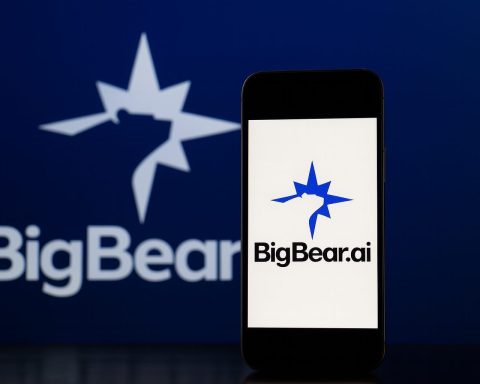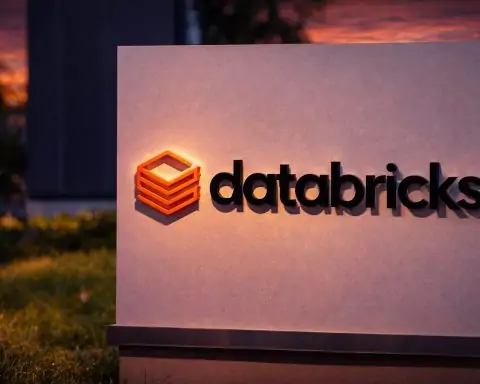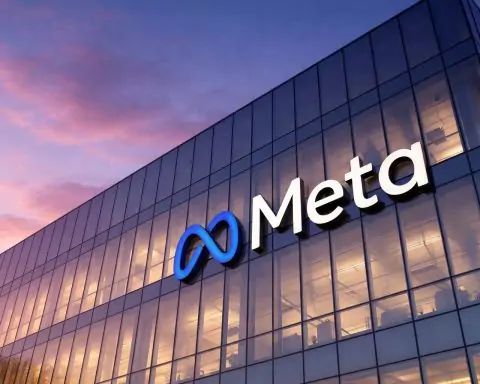- Baidu open-sourced Ernie 4.5 LLM family under Apache 2.0, releasing 10 variants from 300M to 424B parameters and claiming the 300B model outperforms rivals at half the size.
- ElevenLabs released an alpha of its v3 model with 70+ languages and partnered with Cisco to embed lifelike voice AI into Webex contact centers.
- Apple announced Live Translation at WWDC 2025, delivering real-time on-device translation across iOS 16, FaceTime, and calls using Apple’s foundation language model.
- MIT researchers published on June 17, 2025 a study identifying the root cause of position bias in transformers and proposed architectural fixes to improve topic-tracking in long conversations.
- Stanford’s Scaling Intelligence Lab introduced Tokasaurus, an open-source LLM inference engine delivering up to 3× higher throughput on some benchmarks via dynamic prefix batching and multi-GPU support.
- Google expanded Gemini 2.5 with 2.5 Flash and Pro generally available, 2.5 Flash-Lite up to 1,000,000-token context, plus Gemini CLI open-source, with 2.5 Pro in preview for enterprise.
- OpenAI and Microsoft rolled out ChatGPT Business enhancements including internal tool connectors via MCP, ChatGPT Record Mode for macOS transcripts, SSO, and an Advanced Voice upgrade.
- Meta announced Meta Superintelligence Labs, appointing Alexandr Wang as Chief AI Officer and Nat Friedman to lead AI product development, while continuing to open-source LLaMA 2 and Segment Anything.
- Anthropic launched Claude Gov for U.S. government use, added memory and no-code Artifacts, while facing Reddit’s data-scraping lawsuit and a ruling on training with a 7 million-book dataset.
- Regulatory activity intensified as the EU AI Act provisions take effect by August 2025, the UK’s Digital Markets Unit weighs Google’s Strategic Market Status in search, and the US debates AI transparency with bills like the AI Training Data Transparency Act alongside data/privacy and copyright concerns, while Twitter/X bans training on its data and Hollywood unions discuss AI likeness guidelines.
The months of June and early July 2025 have seen rapid developments in natural language processing (NLP) and language technology worldwide. Major AI labs and tech companies rolled out new large language models (LLMs), innovative features in search, translation, and voice applications, and multimodal AI systems. At the same time, regulators and courts grappled with AI policy – from data usage lawsuits to the impending EU AI Act – while significant funding rounds and partnerships signaled a booming NLP startup ecosystem. This report compiles the latest advancements, industry announcements, research breakthroughs, regulatory updates, business moves, and expert insights shaping the language AI landscape in June–July 2025.
Advancements in LLMs, Speech, and Translation
Large Language Models: Google expanded its Gemini 2.5 family of LLMs, making the 2.5 Flash and Pro models generally available and introducing Gemini 2.5 Flash-Lite, a faster, cost-efficient model with up to a 1 million-token context window. Google also released Imagen 4, a state-of-the-art text-to-image model with improved text rendering, now in preview via the Gemini API. OpenAI’s GPT-4.5 (a research preview of its largest model) remained in focus – OpenAI announced plans to phase out the older GPT-4.5 preview in July as it prepares for future model upgrades. Meanwhile, AI21 Labs (backed by NVIDIA and others) continued work on its Jamba model that uses hybrid Transformer–SSM architecture to handle ultra-long contexts efficiently (a trend aimed at reducing LLM “forgetfulness” in long documents).
Open-Source Breakthroughs: A notable shift came from China’s Baidu. The tech giant open-sourced its Ernie 4.5 LLM family under an Apache 2.0 license, releasing 10 model variants from 300 million up to 424 billion parameters. This marked a strategic reversal for Baidu (which once insisted on proprietary models) and highlights China’s move toward commoditizing AI models via open source. Baidu reports that Ernie 4.5’s multimodal Mixture-of-Experts architecture boosts text, image, and cross-modal reasoning, and claims a 300B Ernie model outperforms a rival model at half the size. The open release – along with Alibaba’s popular open-source Qwen models and Huawei’s simultaneous open-sourcing of Pangu models – puts competitive pressure on Western firms like OpenAI and Anthropic that have kept models closed.
Speech and Multilingual Tech: In speech synthesis, ElevenLabs launched an alpha of its new ElevenLabs v3 model, offering more expressive, human-like text-to-speech in 70+ languages. ElevenLabs also partnered with Cisco to integrate its lifelike voice AI into Cisco’s Webex contact center, aiming to make virtual agents sound more natural and empathetic in customer service interactions. For translation, Apple unveiled Live Translation at WWDC 2025, a real-time voice and text translation feature across iOS 16, FaceTime, and phone calls. The system runs on-device using Apple’s new foundation language model, preserving privacy while translating conversations on the fly. Users can now message or speak in one language and have outputs appear in another almost instantly, enabled by Apple’s AI models running locally on iPhones, iPads, and Macs. This reflects a broader industry trend toward multimodal and real-time language tools (combining speech recognition, translation, and voice synthesis) that break language barriers in everyday communication.
Efficiency and Research: Academic and corporate labs delivered research that could improve future NLP systems. MIT researchers published a study identifying the root cause of “position bias” in transformer models – the tendency to overweight the beginning or end of a document and neglect the middle. By modeling how information flows through an LLM’s network, they showed certain architectural choices create this bias, and proposed fixes to help chatbots stay on topic in long conversations. At Stanford, the Scaling Intelligence Lab introduced Tokasaurus, a new open-source LLM inference engine optimized for high-throughput workloads like batch code analysis and large-scale dataset queries. Tokasaurus uses techniques like dynamic prefix batching and async parallelism to achieve 3× higher throughput than previous systems on some benchmarks [1]. It can group prompts with shared text prefixes and efficiently utilize multi-GPU systems, significantly speeding up generation for both small and large models [2]. These advances in AI efficiency, bias mitigation, and context handling promise more reliable and scalable language models in the near future.
Major Company Developments and Product Releases
OpenAI and Microsoft
OpenAI announced several updates benefiting enterprise and power-users of ChatGPT. In early June, OpenAI rolled out ChatGPT Business plan enhancements – including new connectors to internal tools, support for custom plug-ins via its Model Control Protocol (MCP), a “ChatGPT Record Mode” to transcribe and summarize meetings, SSO integration for team accounts, and more flexible enterprise pricing. The Record Mode (initially for macOS) lets business users capture and generate transcripts of meetings locally via ChatGPT’s voice interface, reflecting OpenAI’s push to make its assistant a “true AI teammate” in workplace settings. OpenAI also improved the model’s voice chat: an Advanced Voice update made spoken conversations with ChatGPT sound more natural and fluid for all paid users. On the legal front, OpenAI moved to protect user privacy – it challenged a data demand from The New York Times in court, arguing against handing over ChatGPT conversation logs [3]. OpenAI’s stance is that user chats should remain private, even amid rising scrutiny and legal requests.
Microsoft, OpenAI’s close partner, continued to infuse AI across its products. In June, Microsoft’s Bing Chat and Windows platforms saw incremental upgrades (many leveraging OpenAI models). For example, the Windows 11 Photos app gained AI-powered search and “Relight” features to improve photo discovery and editing. Microsoft also launched a free “AI Agent” training course to help developers build their own AI agents, highlighting concepts like long-term memory and tool use in agent design. While not as headline-grabbing as new models, these steps show Microsoft integrating language AI deeply into productivity software and cloud services. Microsoft’s Azure cloud likewise benefited from new AI offerings – notably, Anthropic’s Claude models were made available via Azure and Amazon Bedrock with government security certifications (FedRAMP High, DoD IL4/5), expanding enterprise access to large models.
Google and DeepMind
Google’s AI division (including Google DeepMind) had a very active month, with a host of launches across LLMs, search, education, and more. Google Gemini 2.5 – the company’s flagship family of foundation models – was expanded and democratized. Google introduced a Gemini CLI (Command Line Interface) as an open-source developer tool, bringing its powerful models into developers’ terminals for coding and automation tasks. The Gemini CLI offers free access to Gemini 2.5-Pro with massive context windows (up to 1M tokens) and tool integration (Search, code execution, etc.), effectively turning Gemini into a scriptable AI agent for developers. Google also launched Gemini 2.5 Pro (upgraded) in preview for enterprise use, calling it their “most intelligent model yet” and the stable version set for general availability within weeks.
Consumer-facing products saw major AI enhancements as well. Google’s Search gained an “AI Mode” – an experimental search experience that can handle complex multi-step queries using a custom Gemini model. In June, Google enabled free-form voice conversations with Search’s AI Mode on mobile, allowing users to ask questions by voice and hear spoken responses, essentially conversing with Google Search in real time. This voice-interactive mode also presents linked search results and saves transcripts for later, blending conversational AI with traditional search. Google even added interactive charts in AI search answers for finance queries, leveraging Gemini’s reasoning to visualize stock data and allow follow-up questions. In Google Photos, the new “Ask Google Photos” feature (powered by vision-language models) rolled out more broadly and can now handle complex queries like “show my beach meals in Spain,” returning relevant images faster. Google’s Chromebook Plus laptops gained built-in AI features too – from AI-driven image editing to smart tab grouping – to enhance productivity with on-device AI [4].
Google DeepMind, the company’s advanced research arm, introduced AlphaGenome, a unifying DNA sequence model aimed at decoding the human genome’s regulatory “dark matter.” AlphaGenome can predict effects of genetic variants and is being offered via API to biomedical researchers. In climate science, DeepMind and Google Research launched Weather Lab, an interactive hub sharing their latest AI models for hurricane prediction. The system provides experimental AI-driven tropical cyclone forecasts and is being used to support the U.S. National Hurricane Center. Robotics was another focus: Google DeepMind announced Gemini Robotics On-Device, a breakthrough that compresses a massive vision-language-action model to run locally on robots. This enables robots to perform tasks with advanced perception and reasoning without cloud connectivity, a significant step for autonomous systems. An accompanying Robotics SDK lets developers fine-tune robots using natural language commands, with on-device performance nearly matching cloud models.
Meta (Facebook) AI
Meta Platforms undertook a major reorganization of its AI efforts in a bid to leapfrog competitors in artificial general intelligence. CEO Mark Zuckerberg announced the creation of “Meta Superintelligence Labs,” a new division unifying all of Meta’s AI teams (across Facebook AI Research, the Reality Labs AI groups, and those behind open-source LLaMA models). The goal is to develop “AI systems that could rival or exceed human intelligence,” with Zuckerberg declaring that achieving superintelligent AI is “coming into sight” and will usher in a new era for humanity. He appointed notable tech leaders to helm the effort: Alexandr Wang, the young founder of Scale AI, was hired as Meta’s first Chief AI Officer to lead Superintelligence Labs, while former GitHub CEO Nat Friedman will oversee AI product development. This talent grab underscores Meta’s ambitions – the company has been aggressively recruiting top AI scientists, reportedly even poaching talent from OpenAI, Google, and Anthropic. The Superintelligence Labs division will focus on building a “personal superintelligence for everyone,” essentially extremely powerful AI assistants integrated across Meta’s products. This strategic shift is Meta’s boldest investment in AI to date, reflecting a determination to be seen not just as a social media company, but as a leader in developing AGI (Artificial General Intelligence). Alongside this, Meta continues to open-source significant AI tools – its LLaMA 2 model (released earlier) remains widely adopted by researchers, and the company’s Segment Anything model for image segmentation and other AI libraries are gaining traction. In sum, Meta spent June doubling down on long-term AI research, reorganizing itself to chase breakthroughs in foundational model capabilities.
Anthropic
Anthropic, maker of the Claude chatbot, had notable updates on both governance and product fronts. The company strengthened its focus on AI safety and long-term alignment by appointing Richard Fontaine – a prominent national security expert and CEO of the Center for a New American Security – to its Long-Term Benefit Trust (LTBT) oversight board. Fontaine’s background (NSC, State Department, Defense Policy Board) brings critical governance expertise as Anthropic navigates the geopolitical impacts of advanced AI. The move underscores Anthropic’s public-benefit mission and the recognition that transformative AI will affect areas like global security and democratic stability. In product news, Anthropic introduced Claude Gov – a specialized version of its Claude LLM for U.S. government and defense clients. These Claude-Gov models are built exclusively for users in classified environments and have already been deployed at “the highest level of U.S. national security”. Access is tightly limited to vetted agencies, illustrating how AI firms are customizing models for sensitive national security applications. More broadly, Anthropic is expanding Claude’s capabilities with upcoming features: it plans to roll out a long-awaited “memory” function enabling Claude to recall past interactions (bringing it in line with ChatGPT’s ability to remember conversation history). Additionally, Anthropic is evolving Claude’s Artifacts (its term for custom workflows or apps) into a full no-code platform for AI-powered mini-apps. This will allow users to build and share interactive tools on top of Claude without coding – positioning Claude as a development platform for tailored AI assistants and demonstrating competition with OpenAI’s plug-in ecosystem.
Anthropic also navigated legal challenges: In early June, Reddit sued Anthropic for allegedly scraping Reddit’s content without permission to train Claude. The lawsuit claims Anthropic violated Reddit’s terms of service by accessing the site over 100,000 times and using Reddit data to enrich Claude without a license. Reddit argues it offered Anthropic a data licensing deal (as it did with Google and OpenAI), but Anthropic declined, leading to “unjust enrichment” worth billions from Reddit’s content. Anthropic has vowed to fight the lawsuit, but the case highlights growing tensions between AI firms and data platforms. In a separate copyright case, a U.S. federal judge issued a split decision regarding Anthropic’s use of a dataset of 7 million books. The judge ruled that training AI on copyrighted text can be protected under fair use (deeming the training process “transformative” and legal) – a win for AI developers – but found that Anthropic’s method of acquiring and storing the books (a “central library” of pirated texts) was illegal. This precedent-setting opinion means Anthropic can legally learn from copyrighted works, but may owe damages for how it obtained the data, reinforcing that lawful sourcing is required even if the AI’s training use is fair use. The trial to determine damages is expected later in the year.
Amazon and AWS
Amazon announced a mix of AI innovations and milestones in its e-commerce and cloud divisions. In late June, Amazon Robotics revealed it has deployed its 1,000,000th warehouse robot – a significant marker of automation in fulfillment centers. Alongside this, Amazon launched a new AI-powered system called “DeepFleet” to coordinate its vast robot fleet. DeepFleet is a bespoke generative AI model that acts like an “intelligent traffic management system” for robots, optimizing their routes and tasks in real time. Running on AWS infrastructure (using Amazon’s SageMaker platform), DeepFleet has already improved warehouse robot efficiency by about 10%. As VP Scott Dresser explained, it learns continually and will keep getting smarter as it ingests more operational data. This underscores Amazon’s strategy of deploying custom AI models to boost logistics productivity at massive scale. Notably, Amazon’s CEO Andy Jassy addressed employees in a June memo about the impact of AI: he predicted that AI advancements will inevitably automate some jobs at Amazon, and urged staff to “embrace the technology” and upskill, advising them to attend AI workshops and incorporate AI into their daily work. This frank internal message – coupled with Amazon having “1,000+” AI projects underway – shows the company bracing for both the productivity gains and workforce disruptions of AI adoption.
On the cloud side, Amazon Web Services continued to broaden its AI model offerings. Anthropic’s Claude 2 (and Claude Gov) became available through Amazon Bedrock, targeting government cloud clients with high security needs. And Amazon’s partnership with Hugging Face deepened to support more open-source models on AWS. Amazon also joined with Hewlett Packard Enterprise (HPE) to announce NVIDIA AI Cloud by HPE, a new service (revealed mid-June) that will offer enterprises NVIDIA-optimized AI infrastructure via HPE’s cloud, reflecting Amazon’s interest in facilitating large-scale GPU-as-a-service for generative AI workloads. In sum, Amazon is applying NLP and AI both internally (in retail operations) and externally (cloud services), while acknowledging the need for its workforce and customers to adapt to an AI-driven future.
NVIDIA and Others
NVIDIA, the leading AI chipmaker, continued to dominate the hardware landscape behind NLP advances. In June, demand for NVIDIA’s GPUs (A100s, H100s) remained extremely high as companies scaled up LLM training – North America’s first half of 2025 saw huge cloud GPU deployments, contributing to NVIDIA’s surging market value. On June 11, NVIDIA and HPE unveiled a collaboration to offer “AI Computing by HPE”, which essentially gives enterprise customers access to NVIDIA’s cutting-edge AI systems through HPE’s cloud and services. This aims to accelerate adoption of NVIDIA’s DGX platforms and software in industries from finance to healthcare. NVIDIA also announced new generative AI tools for developers at its GTC 2025 conference (Paris edition), including NVIDIA NIM – microservices for OpenUSD 3D content generation. While NVIDIA didn’t release new chips in June, its continued strategic partnerships (with Oracle, Snowflake, ServiceNow, etc.) to integrate its AI hardware and frameworks underline how fundamental NVIDIA is to all large-scale NLP and AI initiatives in 2025.
Outside of Big Tech, numerous startups and smaller AI companies also made waves. AI coding assistant startup Anysphere reportedly raised a massive $900 million round led by Thrive Capital to scale its AI-driven developer tools – one of the largest funding rounds in the sector, signaling investor appetite for AI copilots. In healthcare, Abridge, which uses NLP to generate clinical notes from doctor-patient conversations, raised $300 million in Series E funding, doubling its valuation to $5.3B within months. Abridge’s success is tied to a key partnership integrating its medical-scribe AI into Epic Systems’ electronic health record platform, and it’s now expanding from note-taking into AI medical coding. Such growth illustrates the demand for domain-specific language AI (in this case, to ease doctors’ documentation burdens). Meanwhile, in enterprise software, GenXAI – a provider of AI-driven performance management solutions – acquired SoftGrid Computers, a web/app development firm, to bolster its ability to build AI-enabled applications for businesses. And in data infrastructure, ex-Lyft engineers launched Eventual, open-sourcing a processing engine called Daft that handles text, image, and audio data in one unified framework [5]. Eventual’s $20M Series A and forthcoming enterprise product show that supporting AI data pipelines is an emerging niche. Finally, the text-to-speech leader ElevenLabs not only advanced its model (as noted earlier) but strategically aligned with Cisco to bring its voice tech to millions of enterprise users via Webex. This reflects a broader pattern of startups partnering with established players to distribute AI capabilities at scale.
Regulatory and Policy Updates
As NLP technology races ahead, regulators and policymakers in June–July 2025 intensified their efforts to set guardrails:
- EU AI Act: Europe’s landmark AI Act, which was passed in late 2024, is nearing its implementation phases. Key provisions – such as rules for general-purpose AI systems (like LLMs) – are scheduled to take effect by August 2025. EU regulators have been working on a Code of Practice for these AI models, though the European Commission recently delayed its release as it refines guidelines for compliance. Once in force, the AI Act will impose a risk-based framework on AI deployments (banning certain harmful uses and requiring transparency or oversight for higher-risk applications). In June, some industry voices warned that the EU might be overreaching: Bosch’s CEO, Stefan Hartung, publicly cautioned that Europe’s “excessive and vague” AI rules could make the region less attractive for innovation. He urged a simpler regulatory approach, as Bosch itself committed €2.5B more into AI R&D. This highlights a tension in Europe between maintaining stringent ethical standards and staying competitive in AI development.
- United Kingdom: The UK took a notable step by leveraging its new regulatory powers over Big Tech’s AI services. Britain’s Digital Markets Unit signaled it will designate Google with “Strategic Market Status” in search, which would force Google to offer greater transparency and fairness in its AI-driven search results. Among proposed measures are requirements for Google to provide more data access to rivals and not favor its own services – an attempt to prevent AI-enhanced search from entrenching monopoly. Google responded that such “punitive regulation” could hinder deployment of new AI features in the UK. Meanwhile, the UK government is also preparing for its upcoming Global AI Safety Summit (planned for later in 2025), aiming to coordinate international policy on advanced AI – reflecting Prime Minister Rishi Sunak’s bid to make the UK a hub for AI governance.
- United States: In Washington, AI policy remains a hot topic. On June 5, the US House Oversight Committee held a high-profile hearing titled “The Federal Government in the Age of AI,” examining how agencies should adopt AI and what new laws might be needed. Bipartisan interest is growing in areas like AI transparency and data provenance. For instance, lawmakers in New York state advanced the AI Training Data Transparency Act, a bill that would require generative AI developers to publicly disclose what datasets they use for training. Similar transparency or audit provisions are being discussed at the federal level, though no national law has passed yet. Meanwhile, individual states continue to propose AI rules (e.g. California’s pending law mandating notice when AI is used in political ads, and several states restricting government use of facial recognition or requiring AI impact assessments). The White House has so far relied on voluntary AI safety commitments from companies and issued an Executive Order promoting “trustworthy AI,” but June saw growing calls in Congress for targeted AI legislation – ranging from copyright and data protections to algorithmic accountability.
- Legal Precedents: As noted earlier, courts are starting to shape AI policy via case law. The June Reddit v. Anthropic lawsuit exemplifies the coming clashes over data scraping for AI training. This case, along with parallel suits (authors suing OpenAI/Meta for using their works without license, etc.), may push legislators to clarify how copyright and trade secret laws apply to AI. The June ruling in the Anthropic books case provided a nuanced precedent: training on copyrighted content can be fair use (no infringement in the learning process), but building AI datasets via wholesale copying is not protected. This effectively urges AI firms to obtain data legitimately (through licenses or public domain sources) if they want safe harbor for training. We can expect more such rulings in the coming months, which will together frame the de facto legal boundaries for NLP model development in the US.
- Content and Platforms: Social media companies have begun instituting their own AI-related rules. Notably, in early June, Twitter (rebranded as X) updated its developer terms to ban third parties from using Twitter’s data to train AI models without consent. The new clause prohibits using any content from X’s API for “fine-tuning or training a foundational model”. This move came after reports of AI companies scraping billions of tweets. It aligns Twitter with Reddit and others in asserting control (or seeking compensation) over data that AI companies have been harvesting for free. Additionally, the Actors’ Guild in Hollywood has been negotiating guidelines to prevent AI-generated scripts or deepfakes from using performers’ likenesses without pay – these discussions gained attention in late June amid broader writers’ strikes, indicating how AI is impacting content industries and might soon be addressed in contracts or law (e.g., right-of-publicity protections).
Overall, the regulatory climate in mid-2025 is one of intense activity but uncertainty – governments are rushing to catch up with the fast pace of NLP tech. Europe’s AI Act will soon impose the world’s first comprehensive AI rules, the UK is actively intervening in AI-driven markets, and US policymakers are exploring narrower interventions (with support from recent court decisions). How these regulatory efforts balance innovation vs. oversight will heavily influence the trajectory of NLP and AI deployment in the coming years.
Key Acquisitions, Funding Rounds, and Partnerships
The summer of 2025 has been marked by surging investment and consolidation in the NLP and AI arena:
- Megadeals: Some AI startups achieved eye-popping valuations via new funding rounds. Besides the aforementioned $900M for Anysphere’s AI coding assistant, defense AI startup Anduril (which builds AI systems and drones for military use) reportedly closed a $2.5 billion Series G round in late June, valuing it at $30B (nearly doubling since 2023). This indicates how national security concerns are driving huge bets on AI. Likewise, Inflection AI – creator of the Pi conversational AI – was rumored to be raising capital that could value it above $10B (Inflection previously secured funding from tech leaders for its personal AI ambitions). Such large financings show investors anticipating that a few platform-level AI companies will dominate.
- Enterprise Software M&A: Established tech and enterprise software firms are buying AI startups to enhance their products. In June, Salesforce finalized its acquisition of Airkit.ai, a low-code platform for building AI customer service agents, to integrate into Salesforce’s Service Cloud (following Salesforce’s earlier purchase of text-generation startup Cohere’s IP). Meanwhile, Databricks (the data platform) was reportedly in talks to acquire the open-source vector database Pinecone, aiming to expand its offerings in managing AI embeddings and retrieval – though not confirmed, this reflects how data infrastructure companies are merging with AI specialists. On the cloud infra side, Snowflake acquired Neeva (an AI search startup) in May, and June saw further moves as cloud providers scoop up talent for generative AI search and QA capabilities.
- Telecom and AI: A notable partnership formed between Cisco and ElevenLabs as mentioned, bringing together Cisco’s enterprise reach with ElevenLabs’ voice AI to humanize automated call centers. In a similar vein, Zoom announced a partnership with OpenAI to power its new Zoom IQ chat suggestions and meeting summaries. And Oracle partnered with Cohere to offer Cohere’s large language models as a service on Oracle Cloud. These partnerships are mutually beneficial: AI startups get scale and distribution, while incumbents get cutting-edge AI features to stay competitive.
- Finance and AI: Big banks and financial services are also investing in NLP. June saw JPMorgan acquire a unit of Volkswagen’s AI division that specialized in NLP for risk analysis, aiming to bolster AI-based financial forecasting. In fintech, Stripe led a $50M investment into Precedent AI, a startup applying NLP to legal contract analysis for finance, indicating domain-specific NLP tools are in demand. We also saw several AI-for-finance startups raise funds (e.g. Array for AI credit scoring, Sigma for automated earnings calls analysis).
- International Moves: In China, beyond Baidu’s open-source move, Tencent poured more resources into its Hunyuan LLM (rival to Baidu’s Ernie) and invested in multiple local NLP startups focusing on Chinese-language models and chatbots for e-commerce. June reports suggested SoftBank’s Vision Fund was in discussions to lead a $500M round for an “undisclosed AI startup”, likely in Asia, as SoftBank re-engages in AI deals. In the Middle East, Abu Dhabi’s tech fund (G42) took a stake in MosaicML (just before MosaicML’s acquisition by Databricks was announced), underscoring global interest in AI model labs.
- Autonomous Vehicles & AI: A side note – not purely NLP, but June saw General Motors invest $300M in Amnon Shashua’s AI Drive (a startup working on multimodal sensor AI) and Tesla acquire a small AI brain chip startup to boost its self-driving tech. These moves, while focused on vision and robotics AI, often include significant NLP components (for voice interfaces in cars, etc.). They highlight that AI investment is broad-based across industries.
In summary, capital is flooding into the AI sector at an unprecedented scale in mid-2025. Established companies are acquiring AI capabilities to stay relevant, and investors are funding both horizontal AI platform builders and vertical-focused NLP applications (health, finance, customer service). This dynamic market activity suggests confidence that language AI will transform many sectors – and intense competition to stake out positions in the emerging ecosystem.
Expert Commentary and Future Outlook
Amid the flurry of news, AI leaders and experts have been offering perspectives on where NLP and AI are heading:
- Optimism about AGI:Demis Hassabis, CEO of Google DeepMind, shared an optimistic vision of advanced AI’s impact. In a June interview, he predicted that achieving artificial general intelligence (AGI) could usher in an era of “radical abundance” and solve major global challenges. Hassabis suggested that if AI can surpass human cognitive limits, it might help find cures for diseases, address climate change, and boost productivity such that people want for little. Intriguingly, he speculated AGI might even make humans “less selfish”, by alleviating scarcity and encouraging more cooperation. However, Hassabis tempered this optimism with acknowledgement of risks – misaligned AGI or misuse could have serious downsides, which is why DeepMind emphasizes safety research even as it aims for transformative AI.
- Caution on Over-Regulation: In contrast to idealism, some industry figures warn about practical impediments. As mentioned, Bosch’s CEO argued Europe’s heavy-handed regulations might backfire and stifle innovation. His view represents many business leaders who fear that unclear rules (like defining “high-risk” AI too broadly) could slow AI deployment or push talent to more permissive jurisdictions. This debate between ensuring safe AI vs. staying competitive is likely to intensify. Similarly, several U.S. AI experts (such as former Google researcher Geoffrey Hinton, who famously cautioned about AI risks upon leaving Google in 2023) have continued to urge governments to put guardrails on AI development – Hinton in June backed the idea of international cooperation akin to nuclear treaties for AGI safety, even as he acknowledged it’s challenging.
- AI and Employment: Tech CEOs are increasingly candid about AI’s impact on jobs. OpenAI’s CEO Sam Altman spoke in several forums about how GPT models will change the nature of work, suggesting that while some roles will be automated, new jobs (prompt engineers, AI auditors, etc.) will be created. Altman is generally optimistic that human-AI collaboration will raise overall productivity and living standards, but he also joined calls for a universal basic income in the long term, anticipating that advanced AI may substantially disrupt labor markets. June saw think tanks like MIT’s Future of Work publish analyses noting that AI so far is more complementing human workers (handling tedious tasks) than replacing them entirely, but that could change with more capable systems.
- Future Model Trends: Researchers are debating bigger vs. smarter models. Yann LeCun (Meta’s chief AI scientist) argued through the summer that simply scaling up parameters is yielding diminishing returns, and the next breakthroughs will come from new architectures and training paradigms (e.g. incorporating reasoning or memory into models – an approach Meta is exploring with its “Adaptive Computation” research). Others, like OpenAI’s Ilya Sutskever, contend there’s still gas in the tank for scaling: in a private June gathering, Sutskever reportedly hinted that GPT-5 (if built) would focus on reliability and alignment improvements over sheer size, reflecting lessons from GPT-4’s behavior. There’s also excitement about multimodal LLMs – experts predict that by 2026, leading AI systems will seamlessly integrate vision, speech, text, and even robotic actions. Google’s Gemini, OpenAI’s rumored next-gen model, and DeepMind’s Gato are all steps in that direction. In academia, the upcoming ACL 2025 conference (late July) is expected to feature papers on “LLM reasoning with tools,” “efficient fine-tuning techniques,” and bias/fairness in multilingual models – indicating active areas of research that experts believe will shape NLP’s near future.
- AI Advocacy and Ethics: Outside of corporate voices, AI ethicists and activists are refining their strategies. The AI Now Institute released a report in late June urging that AI policy be tied to broader social justice issues (labor rights, racial justice, etc.). They point out that a few tech companies hold outsized power in AI development, and call for coalitions that include labor unions and civil rights groups to ensure AI is developed in the public interest. This reflects a maturing discourse: not just asking what AI can do, but who decides its direction and who benefits. There is also a push for transparency – experts like Timnit Gebru continue to advocate for “model cards” and disclosures with all major models, so that biases and limitations are documented.
Looking ahead, the consensus is that NLP and language technologies will become ever more entwined with daily life – from how we search for information, to how we work, learn, and interact. In the coming months, watch for: potential releases of even more capable models (OpenAI’s next model, Google’s Gemini 3 perhaps), increased competition among open-source LLMs (possibly a “LLaMA 3” from Meta, which could set a new standard if released), and more concrete regulatory steps (the EU AI Act’s rollout and maybe the first U.S. federal AI law). Experts also foresee convergence of modalities – so the line between an NLP model and a vision or robotics model will blur. If June–July 2025 is any indication, the pace of AI advancements will remain blistering. The world is simultaneously awed by the possibilities of these technologies and reckoning with ensuring they are developed safely, ethically, and inclusively. The dialogue between AI creators, users, and regulators is only just beginning, and the latter half of 2025 promises to be pivotal in defining the next era of language technology.
Sources:
- Google AI Product Updates (June 2025)
- OpenAI Announcements & Community Posts
- AI Weekly Newsletter (June 10, 2025 Issue)
- Reuters – Reddit sues Anthropic over data usage (June 5, 2025)
- Anthropic Newsroom – Claude Gov and Trust Appointments
- AI Business – Baidu Open-Sources Ernie 4.5 (July 1, 2025)
- AI Business – Meta Superintelligence Labs Announced (July 1, 2025)
- LinkedIn News – AI Funding & Updates (June 25, 2025)
- MIT News – Study on LLM Bias (June 17, 2025)
- Apple Newsroom – WWDC 2025 AI Features
- TechCrunch – AI21’s Long-Context Model (2024) (Context)
- Wired – Demis Hassabis on AGI and AI Now on activism
- The Verge – Twitter bans training on its data
- Official EU Documents – AI Act Timeline
References
1. scalingintelligence.stanford.edu, 2. scalingintelligence.stanford.edu, 3. ai-weekly.ai, 4. blog.google, 5. www.linkedin.com










